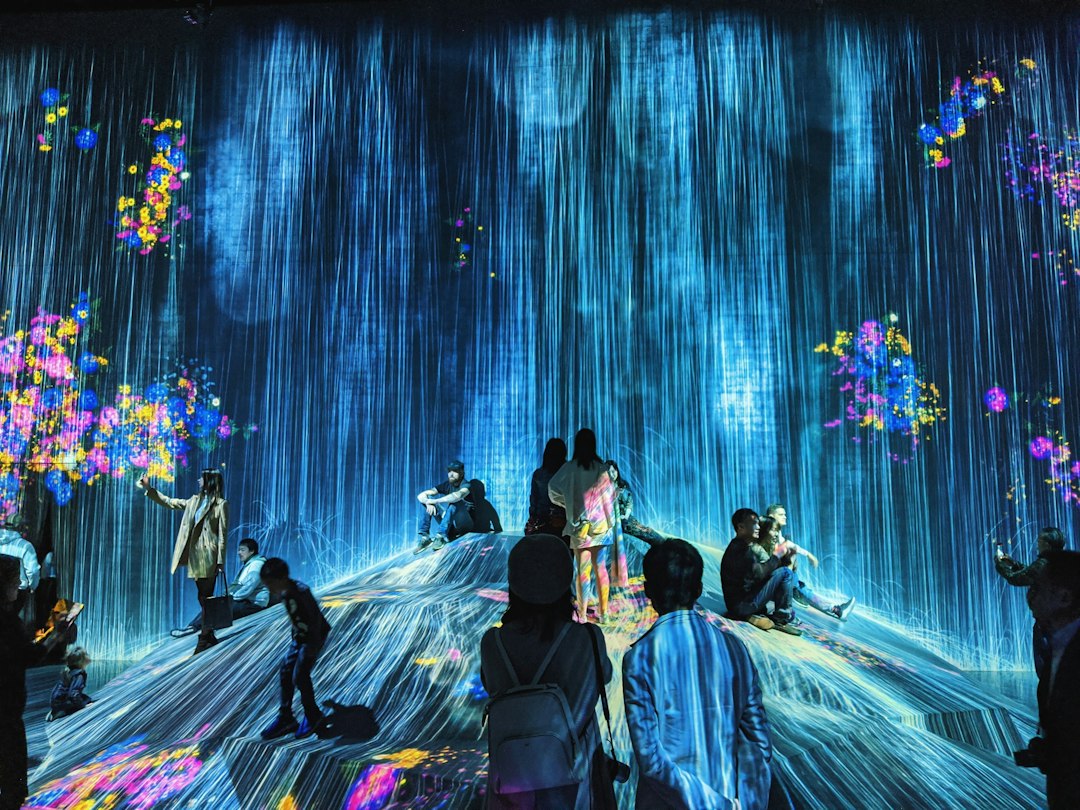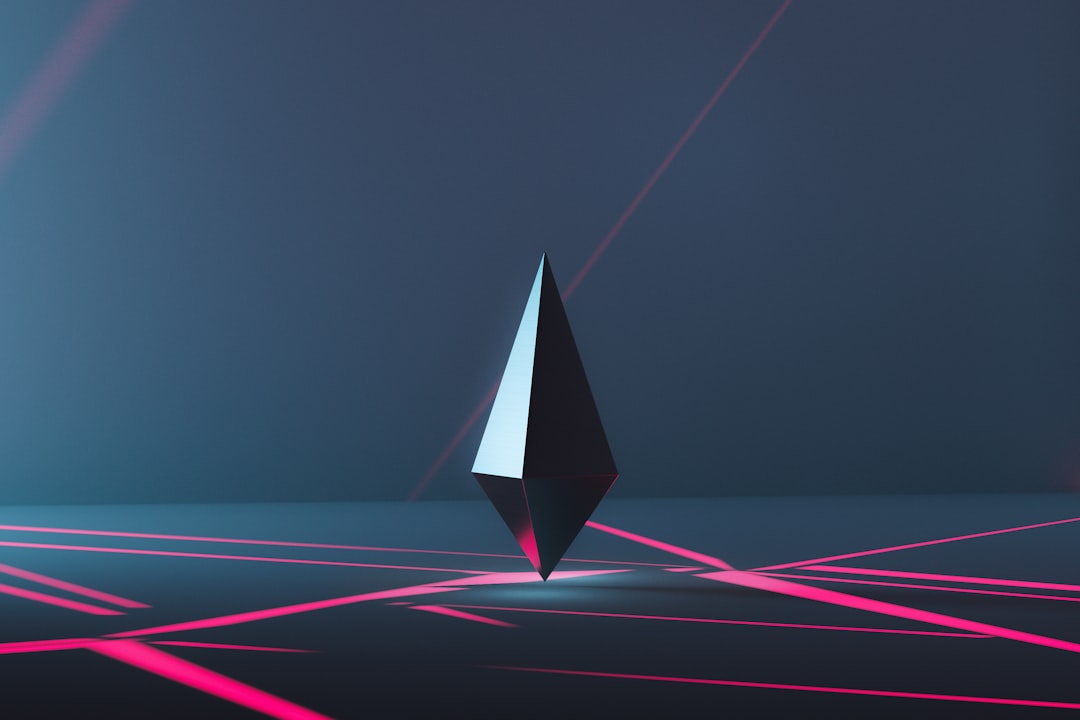Welcome to the Exciting World of NFTs!
Are you ready to dive into the fascinating realm of non-fungible tokens (NFTs)? If you’ve been hearing whispers about this new digital phenomenon and wondering what all the buzz is about, you’ve come to the right place! In this blog post, we’ll embark on a journey together to explore the ins and outs of NFTs and how they are shaping the future of art and the wider world.
So, let’s begin with the burning question: what exactly are NFTs?
NFTs, short for non-fungible tokens, are unique digital assets that exist on a blockchain network, typically powered by cryptocurrencies like Ethereum. Unlike cryptocurrencies such as Bitcoin or Ethereum, which are fungible and can be exchanged on a one-to-one basis, NFTs are distinct and cannot be exchanged on an equal footing.
Think of NFTs as digital certificates of authenticity, representing ownership or proof of a specific item, be it a piece of art, a collectible, a video clip, a tweet, or even virtual real estate. Each NFT carries its own distinct value and attributes, making it one-of-a-kind and irreplaceable.
The concept of NFTs may seem puzzling at first, but stay curious and keep an open mind! As we unravel the layers of their history and connection to the crypto world, you’ll soon discover why they have become such a hot topic of conversation.
Before we delve deeper into the intricacies of NFTs and their revolutionary impact on the art world, let’s take a moment to understand their origins and how they evolved alongside the rise of cryptocurrencies.
What are NFTs?
So, you’ve probably been hearing a lot of buzz around NFTs lately, but what exactly are they? Well, let me break it down for you. NFT stands for non-fungible token, and it represents a unique digital asset that exists on a blockchain, typically using Ethereum. Unlike cryptocurrencies such as Bitcoin or Ethereum, which are fungible and can be exchanged on a like-for-like basis, NFTs are one-of-a-kind and cannot be mutually substituted.
Think of NFTs as digital certificates of ownership for unique items or pieces of content. These items can be anything from digital art, music, videos, virtual real estate, or even tweets. What makes NFTs so fascinating is that they allow artists and creators to authenticate and sell their work directly to collectors, cutting out middlemen and enabling them to retain more control over their creations.
Essentially, NFTs are a way to prove that a particular digital asset is original and cannot be duplicated or tampered with. They use blockchain technology to provide a transparent and immutable record of ownership, making it nearly impossible to fake or counterfeit an NFT.
Now, you might be wondering why someone would be interested in owning a digital asset when they can easily access or replicate it online. Well, the answer lies in the exclusivity and scarcity that NFTs offer. By owning an NFT, collectors can claim true ownership of a specific digital piece, similar to owning a physical artwork or a limited edition collector’s item.
It’s important to note that NFTs have gained significant popularity recently, with eye-catching headlines about multimillion-dollar sales. However, it’s not just about the monetary value attached to these digital assets. NFTs also provide a unique opportunity for creators to interact with their audience in groundbreaking ways.
Imagine a scenario where you can purchase an NFT from your favorite musician and gain access to exclusive content, personalized messages, or even backstage passes to their concerts. These tokens can serve as a gateway to a whole new level of engagement and connection between artists and their fans.
NFTs have undoubtedly disrupted the digital landscape, creating endless possibilities for artists, collectors, and enthusiasts alike. Now that we have a basic understanding of what NFTs are, let’s dive into their fascinating history and their connection to the world of crypto in the next section.
NFTs also provide a unique opportunity for creators to interact with their audience in groundbreaking ways.
The history of NFTs and their connection to crypto
NFTs, or non-fungible tokens, have rapidly gained popularity in recent years, with artists and collectors alike embracing this groundbreaking technology. But where did NFTs originate from and how do they relate to the world of cryptocurrency? Let’s dive into the intriguing history of NFTs and their unique connection to the crypto universe.
To understand the roots of NFTs, we need to take a step back and explore the underlying technology that powers them – blockchain. Blockchain is a decentralized ledger that records transactions across multiple computers, ensuring transparency, security, and immutability. This technology was initially introduced to support cryptocurrencies like Bitcoin, but its potential quickly extended beyond digital currencies.
In 2012, the idea of a “colored coin” emerged, which aimed to represent digital assets using Bitcoin’s blockchain. While this concept laid the groundwork for NFTs, it was in 2017 that the true potential of this technology was realized. CryptoKitties, a blockchain-based game built on the Ethereum platform, introduced the world to the concept of unique digital assets that could be bought, sold, and traded using non-fungible tokens.
CryptoKitties allowed users to buy and collect virtual cats, each represented by a distinct NFT. These NFTs enabled ownership of unique digital assets and opened the doors to a new era of digital ownership. The game became wildly popular, causing a surge in transactions and highlighting the widespread interest in owning and trading unique digital items.
The success of CryptoKitties paved the way for further exploration and development of NFTs, leading to an explosion of creativity and innovation in the crypto space. Artists and creators recognized the potential of NFTs to provide a solution to the long-standing problem of digital art ownership and provenance.
With the advent of NFT platforms like SuperRare, Rarible, and OpenSea, artists gained the ability to tokenize their digital creations, granting them a certificate of authenticity and enabling direct sales to collectors. This shift marked a significant departure from the traditional art world’s reliance on galleries and intermediaries, empowering artists to take control of their own careers and revenue streams.
The connection between NFTs and crypto goes beyond their shared technological foundation. NFTs have also served as a gateway for many individuals to enter the world of cryptocurrencies. Collecting and trading NFTs has become an exciting entry point for crypto newcomers, providing them with a tangible and visually appealing way to engage with the technology. As a result, NFTs have captured the attention of a broader audience, sparking curiosity and encouraging exploration of the wider crypto ecosystem.
As the popularity of NFTs continues to grow, so does the potential for this technology to revolutionize not only the art world but also various industries. From music and virtual real estate to sports memorabilia and even virtual fashion, NFTs offer endless possibilities for creators and collectors alike.
The history of NFTs is still being written, with new developments and use cases constantly emerging. The future of this technology remains open-ended, holding the promise of reshaping the way we perceive and interact with digital assets. So, whether you’re an artist looking to embrace this digital revolution or a collector seeking to own a piece of the future, the journey into the world of NFTs is one filled with endless opportunities and exciting possibilities.
NFTs have also served as a gateway for many individuals to enter the world of cryptocurrencies.
How NFTs are revolutionizing the art world
When it comes to the art world, change has always been a constant. From the Renaissance to the birth of modernism, each era has brought forth its own revolution, challenging the status quo and redefining the way we perceive and appreciate art. And now, we find ourselves at the forefront of yet another seismic shift in the art world – the rise of Non-Fungible Tokens (NFTs).
NFTs, in simple terms, are unique digital assets that are bought and sold using blockchain technology. Unlike cryptocurrencies such as Bitcoin or Ethereum, which are fungible and can be exchanged on a one-to-one basis, NFTs represent ownership of a specific item or piece of content, be it a piece of digital art, music, video, or even virtual real estate.
What makes NFTs truly revolutionary is their ability to establish verifiable ownership and provenance for digital assets, effectively solving one of the biggest challenges faced by artists in the digital age – the issue of reproductions and authenticity. With NFTs, artists can now create and sell unique digital pieces that cannot be duplicated or counterfeited.
This newfound authenticity has opened up a world of possibilities for artists. They can now monetize their digital creations directly, without relying on traditional intermediaries like galleries or auction houses. This democratization of the art market has empowered artists from all walks of life to showcase and sell their work to a global audience, without the barriers of geography or elitism.
Moreover, NFTs have breathed new life into the concept of ownership in the digital realm. In the past, when you purchased a digital item, it was often limited to your personal enjoyment and could not be easily transferred or resold. NFTs have changed that. With their underlying blockchain technology, NFTs enable clear and transparent ownership transfers, allowing collectors to buy, sell, and trade digital assets just like physical artworks.
But the impact of NFTs goes beyond the art market itself. They have sparked a cultural shift in the way we perceive and value digital creations. In a world where everything seems to be fleeting and ephemeral, NFTs offer a sense of permanence and uniqueness. They challenge the notion that digital art is somehow less valuable or important than its physical counterpart, and instead celebrate the digital medium as a legitimate and valuable art form.
With NFTs, artists have the opportunity to explore new creative possibilities, experiment with different mediums, and reach audiences that were previously inaccessible. The boundaries of what can be considered “art” are being pushed, as artists blend traditional and digital techniques to create truly innovative and immersive experiences.
While the rise of NFTs has undoubtedly brought about positive changes, it is not without its challenges. The environmental impact of blockchain technology, the issue of copyright infringement, and the potential for market speculation are all valid concerns that need to be addressed as the art world continues to navigate this new landscape.
However, it is important to approach these challenges with an open mind and a willingness to adapt. The art world has always been resilient, constantly evolving and reinventing itself. NFTs offer a glimpse into the future of art, where artists have greater control over their own work and where the boundaries between the physical and digital worlds are blurred. It’s an exciting time to be a part of the art world, as we witness the birth of a new era, one that promises to revolutionize the way we create, share, and appreciate art.
Unlike cryptocurrencies such as Bitcoin or Ethereum, which are fungible and can be exchanged on a one-to-one basis, NFTs represent ownership of a specific item or piece of content, be it a piece of digital art, music, video, or even virtual real estate.
The Benefits and Challenges of NFTs for Artists
Now that we have explored how NFTs are revolutionizing the art world, let’s dive into the specific benefits and challenges that these digital tokens bring to artists. It’s an exciting time for creators as they navigate this new landscape, and there is much to consider.
One of the most significant benefits of NFTs for artists is the potential for increased visibility and exposure. In traditional art markets, artists often struggle to get their work noticed by galleries or collectors. The art world can be exclusive, with gatekeepers determining who gets to showcase their creations to the world. However, NFTs offer a democratization of access, allowing artists to reach a global audience without the need for intermediaries.
By minting their artwork as NFTs, artists can directly connect with collectors and enthusiasts from all corners of the world. This newfound accessibility can lead to increased recognition, opportunities, and even financial rewards. Artists who may have been overlooked in traditional art markets now have the chance to showcase their talent on a global scale.
Furthermore, NFTs provide artists with greater control over their work and the potential to earn ongoing royalties. When an artist sells an NFT, they can include smart contracts that ensure they receive a percentage of future sales. This opens up a world of possibilities for artists to earn passive income as their art appreciates in value over time. It’s a game-changer for artists who have traditionally relied on one-time sales to make a living.
On the flip side, there are also challenges that artists must navigate in the world of NFTs. One of the primary concerns is the environmental impact of blockchain technology. NFTs are built on blockchain networks that consume a significant amount of energy, primarily due to the process of minting and verifying transactions. As artists embrace NFTs, it’s crucial to consider the carbon footprint associated with their digital creations. Fortunately, efforts are already underway to develop more energy-efficient blockchain solutions.
Additionally, the influx of new artists entering the NFT space means increased competition. While NFTs offer opportunities for artists to gain exposure, it also means navigating a crowded marketplace. Artists must find ways to stand out among the thousands of other creators vying for attention. It requires not only creating compelling artwork but also employing effective marketing strategies to ensure their NFTs reach the right audience.
Another challenge lies in the potential for copyright infringement and intellectual property disputes. As NFTs continue to gain popularity, there have been instances where artists’ work is minted without their permission, leading to legal battles to reclaim ownership. Artists must be vigilant and take steps to protect their creations from unauthorized duplication or misuse.
Despite these challenges, NFTs remain an exciting avenue for artists to explore. The benefits of increased visibility, control over their work, and the potential for ongoing royalties make it a compelling proposition. By embracing this new technology, artists can tap into a global audience, find new revenue streams, and challenge the traditional structures of the art world.
As we move forward, it’s essential to approach the world of NFTs with curiosity and an open mind. The intersection of art and technology has always been a catalyst for innovation, and NFTs are no exception. They offer artists the chance to break free from traditional limitations and forge their own path in the digital realm. Whether you’re a traditional artist exploring new possibilities or a digital native looking to make your mark, NFTs present a world of opportunities worth exploring.
NFTs are built on blockchain networks that consume a significant amount of energy, primarily due to the process of minting and verifying transactions.
The impact of NFTs on traditional art markets
The emergence of Non-Fungible Tokens (NFTs) has undeniably sparked a revolution in the art world. As we delve deeper into the realm of NFTs, it becomes evident that their impact extends far beyond the digital sphere. Traditional art markets, which have long relied on established systems and institutions, are now facing a wave of disruption and innovation.
One of the most significant impacts of NFTs on traditional art markets is the democratization of access. In the past, the art world was often viewed as an exclusive club, with a select few gatekeepers determining what was considered valuable and worthy of recognition. However, NFTs have shattered these barriers, providing artists from all walks of life an opportunity to showcase and sell their work directly to a global audience.
By eliminating intermediaries such as galleries, auction houses, and dealers, NFTs have empowered artists to take control of their own careers and finances. This newfound independence allows artists to retain a larger portion of the revenue generated from their artwork, often receiving royalties with each subsequent sale. This shift in power dynamics has the potential to reshape the traditional art market, challenging the established systems and making it more accessible and fair for artists.
Moreover, NFTs have opened up new avenues for artists to monetize their work. Previously, artists primarily relied on selling physical artworks or reproductions to make a living. However, NFTs have revolutionized the concept of ownership by enabling artists to tokenize and sell digital assets. This has created an entirely new market for digital art, where scarcity and provenance can be established through blockchain technology.
Furthermore, the introduction of NFTs has expanded the definition of what can be considered art. While traditional art markets often prioritize physical paintings, sculptures, and other tangible forms, NFTs have unleashed a wave of creativity and experimentation. Artists are now exploring new mediums such as virtual reality, augmented reality, and generative art, pushing the boundaries of artistic expression. This infusion of digital art forms has not only diversified the art market but also challenged conventional notions of what constitutes value in art.
However, the impact of NFTs on traditional art markets is not without its challenges and concerns. Critics argue that the environmental footprint of blockchain technology used in NFTs, particularly in terms of energy consumption, raises significant ethical questions. Additionally, the potential for fraud, plagiarism, and copyright infringement in the digital realm remains a concern that needs to be addressed.
As NFTs continue to gain traction and evolve, it is essential for the traditional art market to adapt and embrace these changes. The integration of NFTs into existing art market infrastructure could potentially create new opportunities for collaboration and hybrid models. Galleries and auction houses can explore partnerships with digital platforms and blockchain experts to navigate this new landscape and provide artists with the best of both worlds.
The impact of NFTs on traditional art markets is profound and multifaceted. While it challenges traditional systems and institutions, it also opens up new possibilities and avenues for artists. As the art world continues to evolve in the digital age, it is crucial to approach these changes with an open mind, embracing the potential for innovation, accessibility, and inclusivity that NFTs bring. Together, traditional and digital art markets can coexist, inspire one another, and shape a more vibrant and diverse artistic ecosystem for the future.
Previously, artists primarily relied on selling physical artworks or reproductions to make a living.
Conclusion
In conclusion, NFTs have emerged as a groundbreaking technology that is revolutionizing the art world and traditional art markets. They have provided artists with new opportunities to showcase and monetize their creations, while also allowing collectors to own unique digital assets. The concept of non-fungible tokens has opened doors for artists to reach a global audience and break down the barriers of the physical art world.
While the history of NFTs may be relatively short, their impact has been significant. From their humble beginnings in the crypto world, NFTs have rapidly gained popularity and attention from artists, collectors, and enthusiasts alike. The ability to prove ownership and authenticity through blockchain technology has given rise to a new era of digital ownership and the democratization of art.
One of the most exciting aspects of NFTs is their potential to challenge the traditional art market. By removing intermediaries and allowing direct artist-to-collector transactions, NFTs empower artists to take control of their careers and financial destinies. This newfound independence has the potential to reshape the art world and create a more inclusive and diverse space for artists from all backgrounds.
However, it is important to acknowledge that NFTs also present challenges and considerations. The environmental impact of blockchain technology has raised concerns, with the energy consumption associated with NFT transactions being a topic of debate. Additionally, the market for NFTs can be volatile, with prices fluctuating and the potential for scams and frauds. These challenges should be addressed and mitigated to ensure the long-term sustainability and growth of the NFT ecosystem.
As we look towards the future, it is clear that NFTs have the potential to continue transforming the art world and beyond. They have sparked a sense of excitement and curiosity, inviting artists to explore new mediums and audiences, while collectors dive into a world of digital ownership and expression. The possibilities are endless, and we can only imagine what the future holds for this groundbreaking technology.
So, whether you are an artist seeking new avenues of creativity and financial freedom, or a collector looking to own a piece of digital history, NFTs offer a world of possibilities. Let us embrace this innovative technology with an open mind and explore the endless possibilities it has to offer. Together, we can continue pushing the boundaries of art, technology, and human expression.





